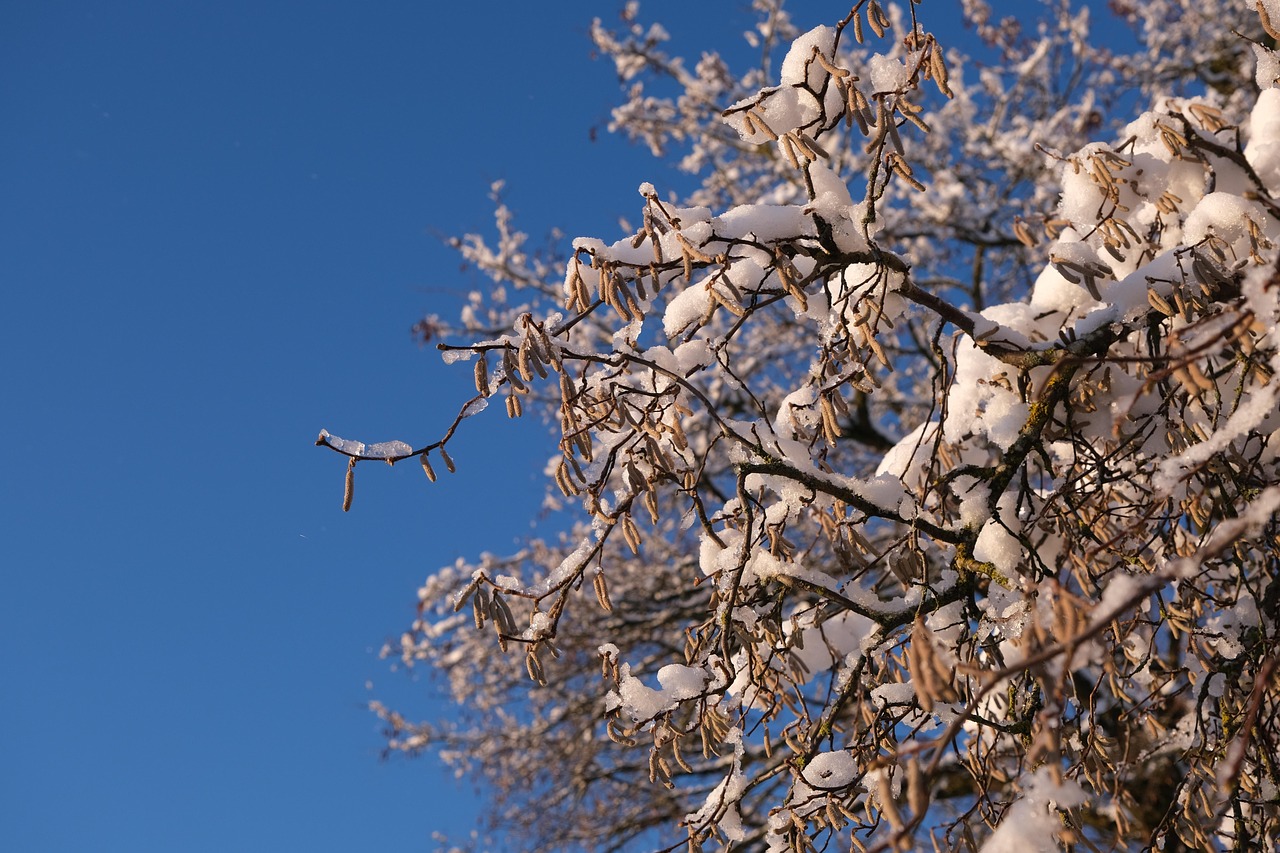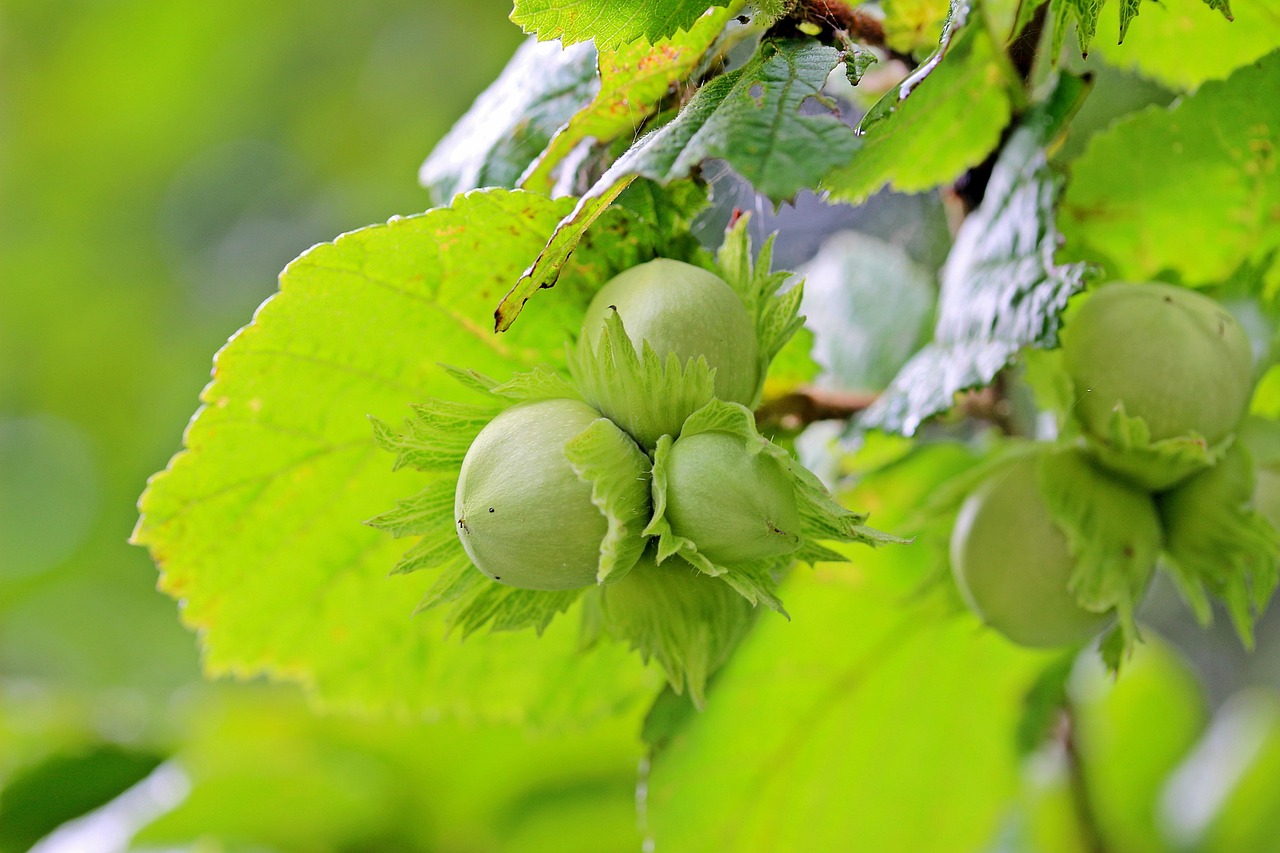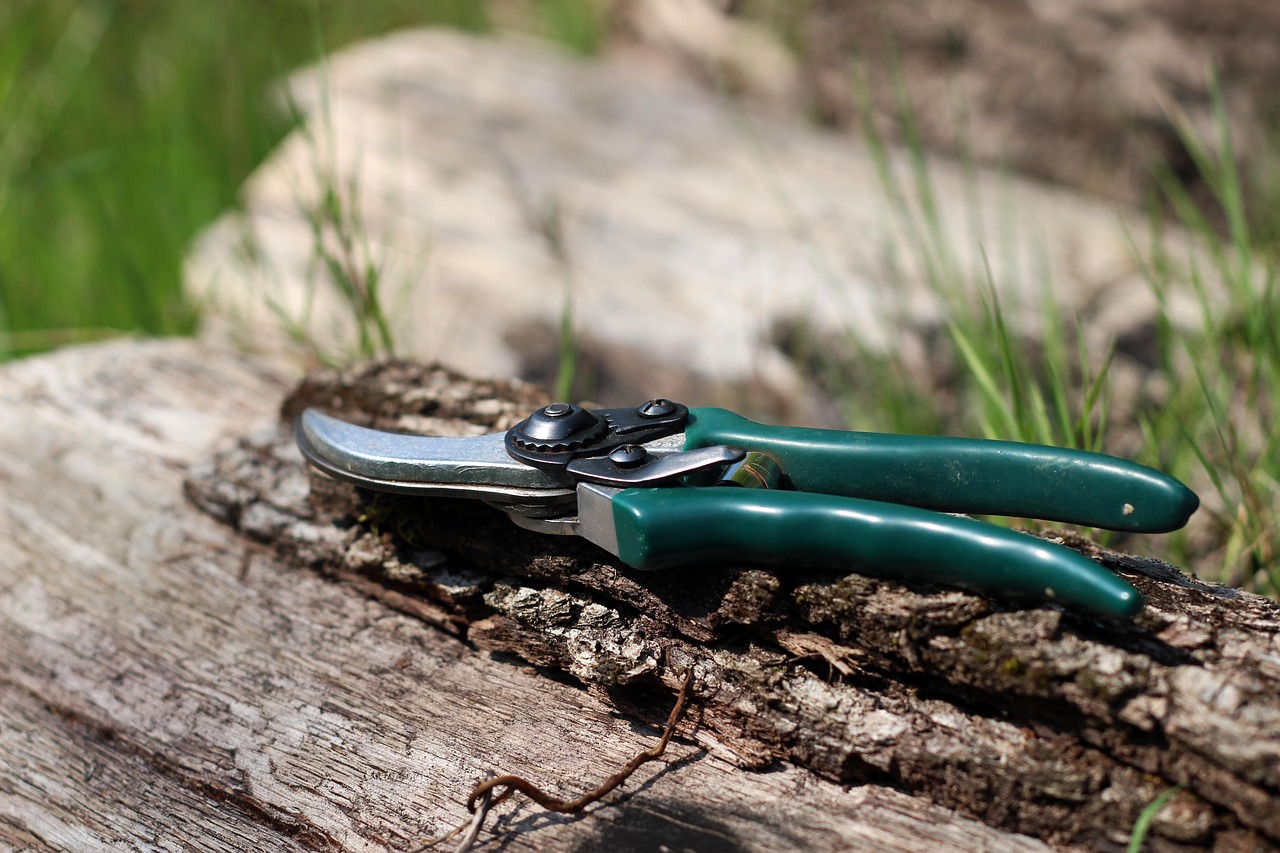Hazelnut tree pruning is essential for smaller groves to enhance air circulation, improve sunlight exposure, and promote healthier growth. Proper pruning techniques can lead to higher yields and easier harvesting.
Hazelnut trees are popular for their delicious nuts and are often grown in smaller groves for personal use or local sales. Pruning these trees is a crucial part of maintaining their health and productivity. It helps to shape the trees, control their size, and remove any dead or diseased wood. Additionally, regular pruning encourages new growth, which is vital for nut production.

Understanding the best practices for pruning hazelnut trees can make a significant difference in the overall health of the grove. The right time to prune, the tools needed, and the specific techniques to use are all important factors. This article will cover essential aspects of hazelnut tree pruning tailored for smaller groves.
Understanding Hazelnut Trees
Hazelnut trees, known scientifically as Corylus avellana, thrive in temperate climates. They can grow up to 20 feet tall and often spread wide, making them suitable for various planting arrangements. Here are some key characteristics of hazelnut trees:
- Deciduous trees that lose their leaves in the fall.
- They produce nuts that are rich in nutrients.
- Typically, they have a lifespan of 30 to 50 years.
Hazelnuts are not only tasty but also beneficial to health. They are high in vitamins and healthy fats, making them a popular choice for snacks and cooking. The demand for hazelnuts has led many growers to cultivate smaller groves instead of large orchards, which require more extensive management.

Importance of Pruning
Pruning is critical for several reasons. First, it helps maintain the structure of the trees. Properly pruned trees can withstand wind better and are less likely to break under heavy loads. Second, pruning enhances sunlight penetration. When trees are well-shaped, sunlight can reach more leaves, promoting photosynthesis and healthier growth.
Moreover, pruning improves air circulation within the canopy. Good airflow reduces the risk of fungal diseases and pests that thrive in humid environments. Lastly, regular pruning simplifies harvesting by ensuring that the nuts are more accessible.
Best Time to Prune Hazelnut Trees
The timing of pruning is crucial for its success. The best time to prune hazelnut trees is during late winter or early spring while the trees are still dormant. This timing minimizes stress on the tree and allows for quicker recovery once the growing season begins.

However, avoid pruning during frost periods to prevent damage to the tree’s exposed cuts. If you miss the late winter window, early summer can be a suitable alternative for light pruning since the tree is actively growing at this time.
Tools Needed for Pruning
Using the right tools is essential for effective pruning. Here is a list of basic tools you should have:
- Hand pruners: Ideal for small branches.
- Loppers: Useful for thicker branches that hand pruners cannot cut.
- Saw: Necessary for larger limbs that need removal.
- Safety gear: Gloves and goggles to protect against injury.
- Pruning paint: Helps seal cuts on larger branches.
Pruning Techniques
Several techniques can be employed when pruning hazelnut trees. Each method serves a specific purpose and contributes to the overall health of the tree:

- Crown thinning: This involves removing some branches from the interior of the tree to allow more light and air into the center.
- Crown reduction: This technique shortens the length of branches to control tree height while maintaining a balanced shape.
- Deadwooding: Removing dead or diseased branches helps prevent the spread of disease and improves overall tree vigor.
- Shaping: Regularly shaping your hazelnut trees will help them grow more uniformly and make harvesting easier.
Each technique requires different approaches and understanding how to implement them effectively will ensure your hazelnut trees flourish.
In summary, effective pruning of hazelnut trees in smaller groves is essential for promoting healthy growth, improving yields, and simplifying harvesting. By mastering the timing, tools, and techniques involved in pruning, growers can significantly enhance their hazelnut production while maintaining tree health.
Common Mistakes in Pruning Hazelnut Trees
While pruning is beneficial, improper techniques can harm hazelnut trees. Understanding common mistakes can help growers avoid pitfalls and ensure their trees remain healthy and productive. Here are some frequent errors to watch out for:
- Pruning at the wrong time: Timing is critical. Pruning during active growth can stress the tree and lead to poor recovery.
- Over-pruning: Removing too many branches can weaken the tree. It’s important to prune conservatively.
- Neglecting deadwood: Failing to remove dead or diseased branches can allow diseases to spread within the grove.
- Improper cuts: Making flush cuts or tearing bark can cause lasting damage. Always aim for clean cuts above a bud or lateral branch.
Avoiding these mistakes will help ensure that your hazelnut trees thrive and produce better yields.
Signs That Your Hazelnut Trees Need Pruning
Recognizing when to prune your hazelnut trees is essential for maintaining their health. Several signs indicate that pruning may be necessary:
- Overcrowded branches: If branches are crossing or rubbing against each other, it’s time to thin them out.
- Poor fruit production: A decrease in nut yield may signal the need for rejuvenation through pruning.
- Dead or diseased branches: Any branches showing signs of disease or death should be removed promptly.
- Unbalanced shape: Trees that appear lopsided or misshapen may require shaping to restore balance.
Being attentive to these signs will help maintain the overall health and productivity of your grove.
Seasonal Care After Pruning
After pruning, hazelnut trees require specific care to ensure proper recovery and growth. Here are some important steps to take:
- Monitor for pests: After pruning, inspect trees regularly for pests that may take advantage of newly exposed areas.
- Watering: Ensure that trees receive adequate water, especially during dry spells. Newly pruned trees may need extra moisture.
- Fertilization: Apply a balanced fertilizer in early spring to support new growth. Look for fertilizers high in nitrogen.
- Mulching: Apply mulch around the base of the trees. This helps retain moisture and suppress weeds.
Caring for your trees after pruning is just as important as the pruning process itself. These steps will foster healthy regrowth and improve overall vitality.
Advanced Pruning Techniques
For those looking to take their pruning skills to the next level, advanced techniques can enhance tree structure and production further. Here are some methods to consider:
- Coppicing: This involves cutting back a tree to ground level, encouraging multiple stems to grow. This method can rejuvenate older trees and enhance nut production.
- Espalier: Training trees to grow flat against a wall or trellis can optimize space and improve sun exposure.
- Topping: Although generally discouraged, topping may be used sparingly on older trees to control height when necessary.
Each of these advanced techniques requires careful consideration and planning. They can significantly impact tree health and productivity if executed correctly.
The Role of Climate in Pruning Hazelnut Trees
The climate plays a significant role in how and when hazelnut trees should be pruned. Different regions may have varying growing seasons, which influence pruning practices. Here are key considerations based on climate:
| Climate Type | Optimal Pruning Time | Considerations |
|---|---|---|
| Temperate | Late winter to early spring | Avoid frost; focus on shaping and thinning. |
| Tropical | After harvesting season | Prioritize deadwood removal; avoid heavy cuts that stress trees. |
| Arid | Early spring | Monitor water levels; ensure moisture retention post-pruning. |
Understanding your local climate will help you tailor your pruning practices effectively, leading to healthier trees and better yields.
Resources for Further Learning
If you wish to deepen your understanding of hazelnut tree pruning, several resources are available:
- Cooperative Extension Services: Offers regional-specific advice on tree care.
- Hazelnut Growers Association: Provides resources and networking opportunities for hazelnut producers.
- Books on Tree Pruning: Search for books that offer comprehensive guides on pruning techniques and care.
Utilizing these resources can provide valuable insights and tips that will enhance your hazelnut pruning skills over time.
Pruning Hazelnut Trees for Specific Goals
When pruning hazelnut trees, it is essential to understand the specific goals you want to achieve. Different pruning techniques can help meet various objectives, such as improving nut quality, increasing yield, or enhancing tree longevity. Here are some primary goals and corresponding pruning strategies:
Improving Nut Quality
To enhance the quality of hazelnuts, focus on selective pruning. This method allows the tree to concentrate its energy on fewer, higher-quality nuts.
- Remove weak branches: Eliminate branches that are weak or spindly, as they tend to produce smaller nuts.
- Encourage sunlight: Thinning out branches helps improve light penetration, which is critical for developing larger nuts.
- Maintain health: Regularly remove diseased or damaged branches to prevent the spread of disease and maintain overall tree health.
Increasing Yield
If your primary goal is to boost the yield of your hazelnut trees, consider implementing a more aggressive pruning strategy:
- Open the canopy: Thinning out dense areas allows better air circulation and sunlight exposure, leading to increased nut production.
- Shorten branches: Trimming back long branches can promote bushier growth and potentially increase nut clusters.
- Use rejuvenation techniques: For older trees with declining yields, consider rejuvenation pruning to stimulate new growth and productivity.
Extending Tree Longevity
To ensure your hazelnut trees remain healthy for many years, focus on practices that promote longevity:
- Regular maintenance: Schedule annual pruning to remove dead or diseased wood and maintain tree structure.
- Avoid excessive cuts: Be cautious not to remove too much foliage at once, as this can stress the tree.
- Monitor tree health: Regularly inspect for signs of disease or stress and address these issues promptly.
Understanding Hazelnut Tree Varieties
Different varieties of hazelnut trees may require slightly different pruning approaches depending on their growth habits and characteristics. Here’s an overview of popular hazelnut varieties and their specific needs:
| Variety | Growth Habit | Recommended Pruning Approach |
|---|---|---|
| American Hazelnut (Corylus americana) | Shrub-like; multi-stemmed | Coppicing every few years can encourage vigorous new growth. |
| European Hazelnut (Corylus avellana) | Tall tree; single-stemmed | Focus on shaping and thinning to maintain a balanced top. |
| Filbert (Corylus avellana ‘Contorta’) | Curling branches; ornamental | Regularly shape to maintain aesthetic appeal while ensuring health. |
Understanding the specific needs of each variety will help you customize your pruning techniques for optimal results.
Pest and Disease Management in Pruning
Pests and diseases can significantly impact the health of hazelnut trees. Proper pruning can help manage these issues effectively:
Pest Identification and Control
Common pests that affect hazelnut trees include:
- Filbert weevil: This insect can damage nuts. Pruning may remove infested branches and improve airflow.
- Aphids: These can weaken trees by sucking sap. Regular inspection and timely removal of affected leaves are essential.
- Mites: Spider mites can thrive in dry conditions. Maintaining tree health through proper pruning helps reduce stressors that attract them.
Disease Prevention Strategies
Several diseases can afflict hazelnut trees, including:
- Corylus blight: This fungal disease can cause dieback. Remove affected branches during pruning to prevent spread.
- Bacterial blight: Symptoms include dark lesions. Prune away infected areas to improve tree health.
- Powdery mildew: This fungus can be managed by increasing air circulation through regular thinning.
Being proactive in pest and disease management during the pruning process can lead to healthier trees and a more productive grove.
The Role of Soil Health in Pruning Success
The soil quality around hazelnut trees significantly influences their overall health and productivity. Proper soil management complements pruning efforts:
- Nutrient-rich soil: Ensure that soil is well-fertilized with essential nutrients like nitrogen, phosphorus, and potassium to support vigorous growth.
- Soil pH balance: Test soil pH regularly. Hazelnuts prefer a pH range of 6.0 to 7.0 for optimal nutrient uptake.
- Drought management: Well-draining soil helps prevent root rot while retaining adequate moisture for tree health.
Focusing on soil health will enhance the effectiveness of your pruning practices, leading to stronger trees and better yields over time.
Implementing a Pruning Schedule
Creating a pruning schedule is vital for maintaining the health and productivity of hazelnut trees. A well-planned schedule ensures that all necessary tasks are completed timely, ultimately leading to better yields and healthier trees. Here are some considerations for developing an effective pruning schedule:
- Annual Review: Assess the condition of your trees at the beginning of each growing season. Look for dead branches, signs of disease, and overall tree structure.
- Seasonal Timing: Schedule pruning in late winter or early spring when trees are dormant. This timing minimizes stress on the trees and allows for quick recovery.
- Regular Maintenance: Include light pruning and inspections throughout the growing season to manage pests and diseases as they arise.
- Documentation: Keep a record of your pruning activities each year. This documentation helps track what techniques were effective and which areas need more focus.
By implementing a pruning schedule, you can maintain consistent care for your hazelnut grove, leading to improved tree health and productivity over time.
Community Resources and Support
Growing hazelnuts can be a community effort. Engaging with local agricultural organizations and fellow growers can provide invaluable support and knowledge. Here are some ways to tap into community resources:
- Join Local Grower Associations: Many regions have associations dedicated to hazelnut growers. These groups often offer workshops, training sessions, and networking opportunities.
- Participate in Cooperative Extension Programs: Local extension services can provide research-based information on best practices for pruning, pest management, and soil health.
- Attend Workshops and Seminars: Look for events focusing on hazelnut production. These can provide hands-on experience and expert insights into effective pruning techniques.
- Online Forums and Social Media Groups: Engage with online communities where hazelnut growers share experiences, tips, and advice on tree care.
Connecting with others in the hazelnut growing community can enhance your knowledge and help you tackle challenges effectively.
Environmental Considerations
As responsible growers, it’s essential to consider the environmental impact of our practices. Sustainable methods not only benefit the ecosystem but also contribute to the long-term viability of your hazelnut grove. Here are some environmental considerations:
- Biodiversity: Encourage a diverse ecosystem around your grove by planting cover crops and native plants. This biodiversity can attract beneficial insects that aid in pest management.
- Soil Conservation: Practice crop rotation and minimize soil disturbance to maintain soil structure and health.
- Water Management: Implement efficient irrigation systems to conserve water and prevent runoff. Use mulch to retain soil moisture and reduce weed growth.
- Pesticide Use: Limit chemical pesticide use by integrating organic pest management strategies, such as introducing natural predators or using biopesticides.
By considering these environmental factors in your pruning and overall management practices, you can create a sustainable agriculture system that benefits both your trees and the surrounding ecosystem.
Final Thoughts
Pruning hazelnut trees is an essential practice that directly influences the health, productivity, and longevity of your grove. By understanding the various techniques, seasonal care requirements, and environmental considerations, you can maximize yields while maintaining tree vigor. Implementing a structured pruning schedule, seeking community support, and being mindful of ecological impacts will further enhance your success as a hazelnut grower.
The journey to mastering hazelnut tree pruning may take time and experience, but the rewards of healthy trees and abundant harvests make it worthwhile. Stay informed, remain adaptable in your methods, and enjoy the fruitful results of your hard work in nurturing your hazelnut grove.
